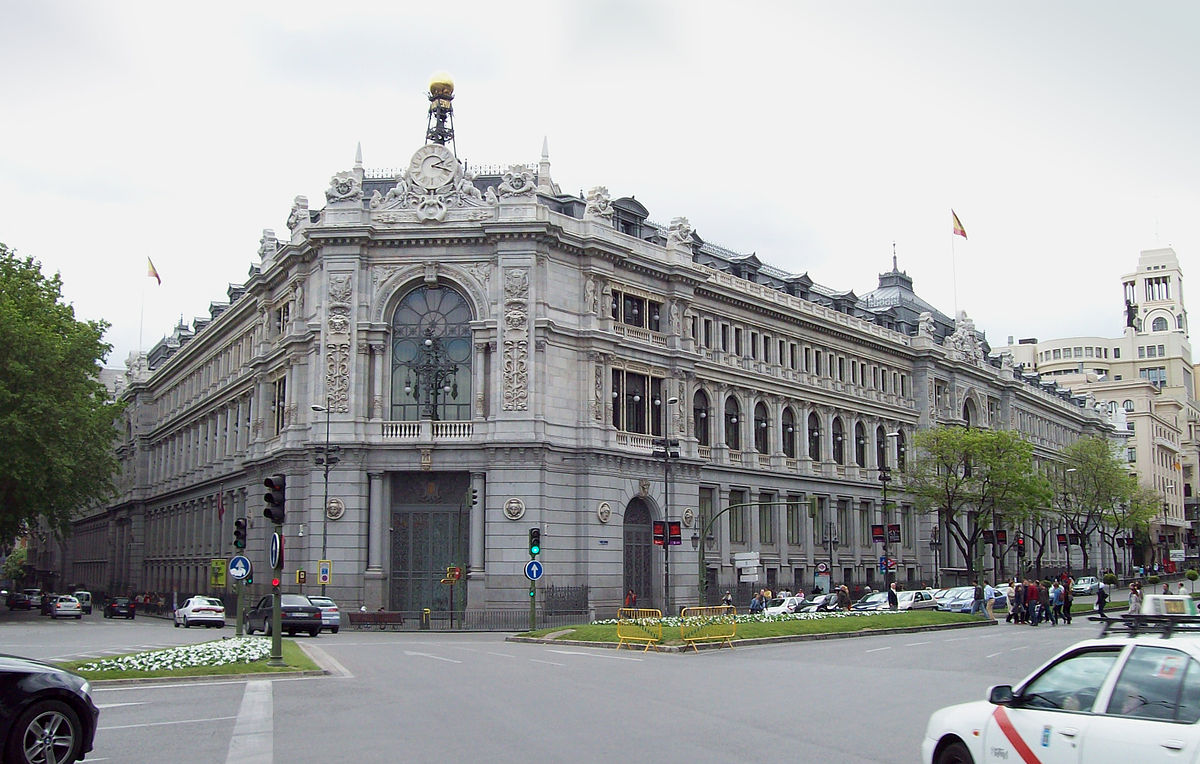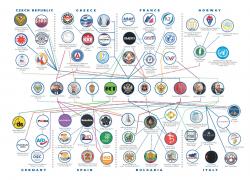The COVID-19 Crisis and the Consumer Price Index in Spain
In this week’s column, Jorge Jraissati studies the relationship between the COVID-19 crisis and the consumer price index in Spain. Jorge has been hearing anecdotes about price increases in Spain, which contradicts the macroeconomic indicators of the country. After researching about it, Jorge concludes that although there has not been considerable price increases in Spain, there is indeed an interesting phenomenon taking place in Spain’s food sector: that those supermarkets located in humble sectors have increased their prices while their counterparts in more prosperous neighborhoods have maintained competitive prices. This price variation is being produced not only because these supermarkets face lesser competition but also because they experience differences in consumer behavior.
In academic circles, the European Union - and in particular the Euro Zone - tends to be associated with a monetary phenomenon called deflation, which consists of a generalized decline in the prices of goods and services, motivated by a fall in demand or excesses in the productive capacities of the economy.
In the case of the European Union, this phenomenon is specifically associated with various structural problems, such as its aging productive population, high youth unemployment especially in the Mediterranean countries, as well as the large number of regulations and taxes that European countries impose on their small and medium businesses.
These factors – together with the aggregate demand collapse due to the quarantines – have resulted in Spain's Consumer Price Index (CPI) standing at -0.9% so far this year. Generalized to the regional context of the Euro Zone, this could explain why the Euro has significantly strengthened against the Dollar this year, with an 11% increase in its exchange rate since March.
However, when I mention this topic not in academic or business circles, but on a day-to-day basis, I hear a very different diagnosis. The vast majority of people tell me that the cost of living in Spain is far from reflecting what the CPI supposedly shows. And on the contrary, they feel that there has been an increase in prices.
Therefore, without mentioning the income shock that the pandemic has inflicted on the vast majority of Spaniards and Venezuelans residing in Spain, I researched which items within the CPI have really increased in recent months. I did this to understand why the common citizen in Spain feels that their cost of living is increasing, and to help them manage their finances more efficiently.
COVID and the Consumer Price Index in Spain
When we study the different items that the CPI handles in its database, we find that there have been three major sectors where deflation has occurred at a higher rate: The housing sector due to the general aversion people have to move from their current homes. The transport sector due to quarantines, the increase in teleworking, and the sharp drop in oil prices. And the communications sector, which was already a trend even before the pandemic, due to the large amount of innovation that has occurred in this sector worldwide.
Looking at these three sectors, I find it easier to understand why the general drop in prices has not been felt by the population. Out of the three large sectors mentioned above, only one of them represents a variable cost, transport. On the contrary, both housing and communication represent monthly expenses pre-established by a contract or initial negotiation. For example, the rent of a house does not fluctuate with respect to the market value of that house. It is rather established during an initial negotiation between owners and tenants.
Moreover, we can observe in the CPI database that prices have increased in a sector where citizens make transactions daily, on food. In this sector, an annual increase of 2.5% can be observed. This increase may not sound very significant – especially for those of us who are experiencing the Venezuelan hyperinflation, which expects to close 2020 in four digits – but it can serve as an indication that there is the problem, since a generalized increase of 2.5% can mask significant increases in specific sectors and items. For example, a 2.5% increase can mask a relatively larger price increase for certain consumers, as well as relatively larger increases for certain mass consumer products.
Regarding the first parameter mentioned, the Association of Consumers and Users of Spain (OCU) just released a study about how high the price increase has been in each supermarket chain. As readers can see in the following table, supermarkets in Spain have increased their prices on average by 2.8% so far this year. But from this increase, those supermarkets usually located in humble sectors have increased their prices relatively more, while the supermarkets whose consumers have more resources have decided to keep their prices competitive.
Such an inequality usually indicates that the price variation between chains is due to different consumption patterns among different segments of the Spanish population, as well as inequalities in their ability to mobilize and save. For example, in economically prosperous areas, there are usually several supermarket chains competing with each other, which is not the case in more remote areas, or lower income areas. For this reason, together with the mobility limitations of those who depend on public transport to do their shopping, there has been a much higher price increase in certain supermarket chains.
And with regard to the second parameter mentioned - that the average increase can mask vertiginous increases in some mass consumer products - the data from the OCU reflects that the greatest increase has been regarding fresh foods, such as fruits and vegetables. For example, there has been an increase of about 40% in products such as orange, cauliflower and lemon. But in general terms, the data only shows an average increase of 5% in fresh products, a percentage that should be higher in lower-class supermarkets, given the inflationary bias that I mentioned earlier. Ultimately, despite this, the increase is not enough to reflect the collective sentiment that exists regarding the increase in the cost of living in Spain. On this subject, a study carried out last month reported that 33% of Spaniards claim to have noticed a considerable increase in food prices.
Conclusions
Usually when the macroeconomic indicators say one thing, but the people another, I tend to think that these indicators hide something behind. And for this reason, I started to study the supposed price hikes in Spain.
But after studying this assertion, I must conclude that, although there has been a general increase in food (the OCU data shows that 64% of the products in the basic basket have increased in price), said increase is not significant and it is not comparable to the collective sentiment on this issue.
In this sense, my speculation on the subject is that this sentiment is the result of the bad economic situation of the country due to the pandemic, as well as consumers who today have to buy in supermarkets considerably more, as they cannot go out to eat as they usually do.
Therefore, my recommendation in this regard would be to look for ways to keep a better accounting of what it is purchased, and at what amount it is purchased, in order to maximize the return on your income. Simply understanding how to shop selectively could represent a significant financial improvement for millions of families. On this issue, the OCU insists that a household can save an average of 971 euros per year by buying selectively. These savings would be of special help to the thousands of Venezuelans residing in Spain, most of whom work hard to save, invest, and improve their quality of life.
Jorge Jraissati
Jorge Jraissati is the president of the Venezuelan Alliance. Graduated at the Wilkes Honors College, Jorge is an economist, political leader, and a fellow at the Abigail Adams Institute. Jorge has been invited as a guest lecturer to over 20 universities, such as Harvard, NYU, and Cambridge.




















